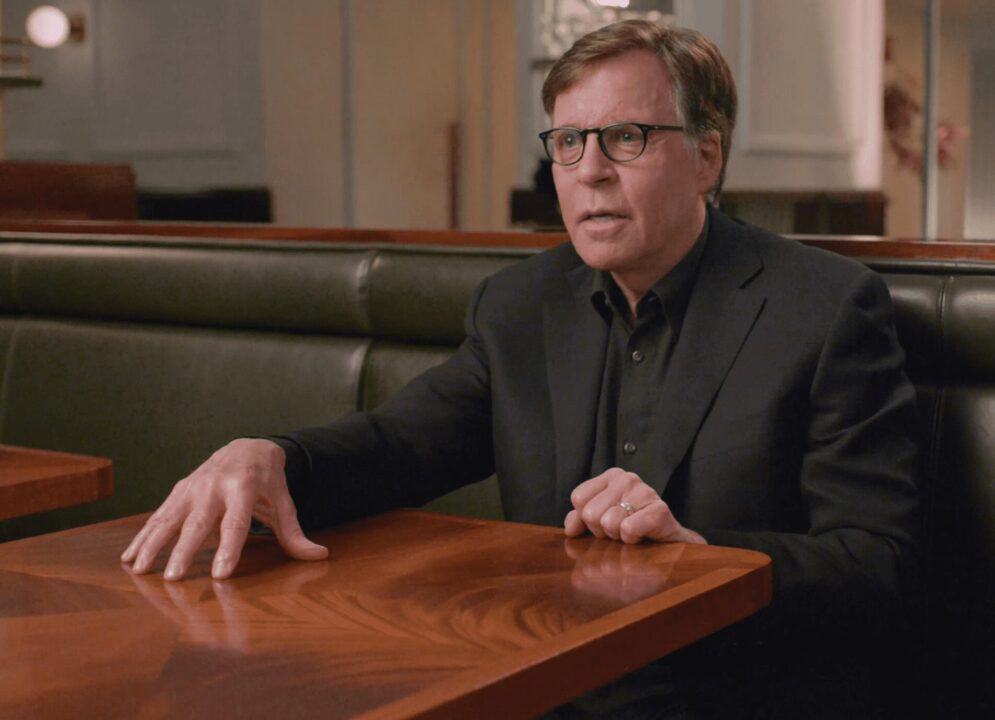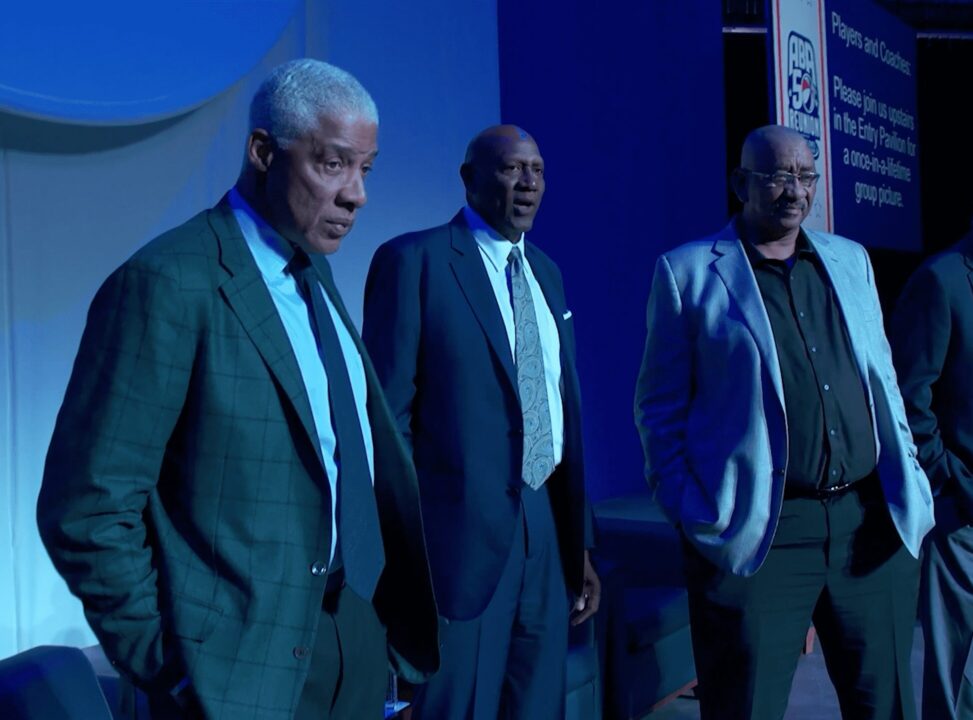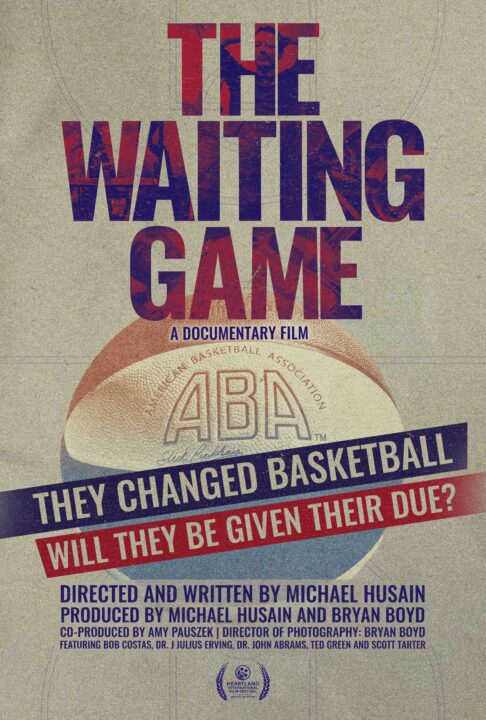Basketball fans often view the NBA as the sole professional basketball league. However, to do so overlooks the significant contributions of the American Basketball Association that preceded it. The ABA introduced groundbreaking elements such as the three-point line and the slam dunk competition and entertainment features like player fashion, sneakers, halftime shows, and cheerleaders—elements we often take for granted today. The ABA enriched the game and laid the groundwork for the modern NBA, making basketball more enjoyable and dynamic.
READ MORE: ‘The Waiting Game’ Review: The Ongoing Drama Surrounding the ABA/NBA Merger
In the new documentary The Waiting Game, writer-director Michael Husain explores the NBA-ABA merger and former ABA players’ ongoing challenges. Featuring insights from legends like “Dr. J” Julius Erving and broadcaster Bob Costas, the film highlights these players’ profound impact on transforming basketball into a multi-billion dollar sports and entertainment phenomenon. In our exclusive interview, Husain emphasizes the importance of recognizing the social justice issues surrounding their treatment, ensuring their legacy is understood and appreciated.
What inspired you to create your new documentary, The Waiting Game, about the ABA-NBA merger and the struggles of former ABA players?
Michael Husain: The Waiting Game initially arose from being a sports fan and learning a story I had no idea about. But quickly, it became bigger than sports—about injustice and wrong that must be exposed and corrected.
The guys who played in the old ABA innovated the modern game of basketball, which is now worth billions. How could anyone see them struggling now as older men and not want to help? That was the question that kept coming back to me.
Can you walk us through your research process for this documentary? What challenges did you face in uncovering the ABA’s legal history?
MH: There were several key research threads. First, I needed to understand the impact of the ABA on basketball. Terry Pluto’s book Loose Balls is the go-to on that material and other books on the ABA. Next, I needed to understand the deal that went so badly – often called “The Merger” – that it left former players unable to care for themselves in their later years. It happened in 1976, and all those documents were in the possession of Scott Tarter, the lawyer in the film who co-founded The Dropping Dimes Foundation, which was set up to assist struggling ABA players.
Then, I needed to understand the social/cultural impact. The ABA was created in 1967, during the apex of the civil rights movement in America. In some ways, it reflected the changes that were afoot in society. Black cultural influences in the modern NBA are plain to see and celebrated. Much of that came from the ABA, and renowned sports sociologist Dr. Harry Edwards helped me understand it.

You mention the ABA’s significant innovations, like the three-point shot and the slam dunk competition. How do you think these contributions are perceived today, especially by newer generations of basketball fans?
MH: I think they are no longer seen as innovations; they are seen as “basketball.” That’s the game we all love these days, myself included. So part of the challenge in storytelling was to unfold the story for fans, say, 55 and above, who might recall the ABA, and those under that age who may have no idea it existed.
And, yes, remind them that the ABA innovated many aspects – including entertainment features like player fashion, sneakers, halftime shows, cheerleaders, and more – that we take for granted. The ABA created massive value for the modern NBA and simply made the game a lot more fun.
Who were some of the most impactful people you encountered while making this film?
MH: I appreciated the contributions of legends like Dr. J, Julius Erving, Bob Costas, and others, and they were great interviews. Dr. Harry Edwards, who was active in the civil rights era, invented sports sociology as an academic discipline, is just generally brilliant, and was very impactful in framing the story more widely than basketball.
James Jones and Ralph Simpson, who were extraordinarily gifted as ABA players and now struggle because of how this deal was structured, greatly impacted me. Their strength and honesty in discussing their situations/frustrations hit everyone on the team pretty hard.

Were there any particularly memorable interviews or moments you had while shooting?
MH: Oh yes. We traveled to San Jose State University to interview Dr. Harry Edwards. It was an important shoot for us. We booked a room in their beautiful library, set up for a couple of hours, and were ready to go. Ten minutes before Harry arrives, an announcement comes over an intercom to evacuate immediately. There is an active shooter situation in the building!
We exited to SWAT teams and other law enforcement streaming into the building while I was frantically trying to reach Dr. Edwards to tell him to stay away. We left all our gear in the room. It was very, very stressful. Thankfully, the situation was resolved several hours later, and no one was harmed. We were able to return the next day – all the gear was there and untouched, and Dr. Edwards was a phenomenal interview.
What was the most challenging aspect of bringing this documentary to life, both creatively and logistically?
MH: Our approach involves a very layered story. Therefore, we needed to ensure the audience got enough information and/or emotional impact from each layer we revealed.
While more challenging from a story perspective, I hope the payoff in the last third of the film – which becomes more verité in style as the tiny not-for-profit takes on the Goliath of the NBA – is more rewarding because of the approach.

Why do you believe the story of the ABA’s players is important to the history of basketball and sports?
MH: It is important to sports history because the story of the innovations of the ABA is being lost. Having a heart-wrenching set of circumstances allows us to remind people of just how incredible the ABA was. That was very important in why I pursued this.
In what ways do you think this documentary might influence ongoing discussions about athlete rights and corporate responsibility in sports? What do you hope your documentary will achieve regarding advocacy for these individuals?
MH: From a narrow NBA / NBA players union perspective, I hope it reveals to them that some were left out and still need help. It would be a relatively meager sum to the powerful but life-changing to the guys left out or the widows who saw no benefits.
From a broader perspective, I hope it reminds corporate leadership of the terrible consequences when basic humanity isn’t present in the boardroom. Actuaries, accountants, and lawyers are smart and must be informed in decision-making. But if they are not tempered by someone advocating for “golden rule” decency in corporate behavior, what happened to the ABA guys seems to be the result. Real people get hurt.

What message or feeling do you hope audiences take away from The Waiting Game?
MH: I hope they understand these men’s immense impact on what has become a multi-billion dollar sports/entertainment juggernaut. Also, the recognition that there is a social justice aspect to how they were treated should not be ignored. Lastly, I hope audiences feel some outrage. As well as a desire to put some pressure on the powers that be to fix a very fixable situation.
Are there any other subjects or issues you’re passionate about that you’re considering for your next documentary?
MH: I’m a big fan of redemption stories. And I’m following a story of a prison re-entry program. In its pilot, it started to empty the lock-up where it was being used. People were getting out of jail and staying out, charting their redemptions. That documentary should be complete in 2025.

